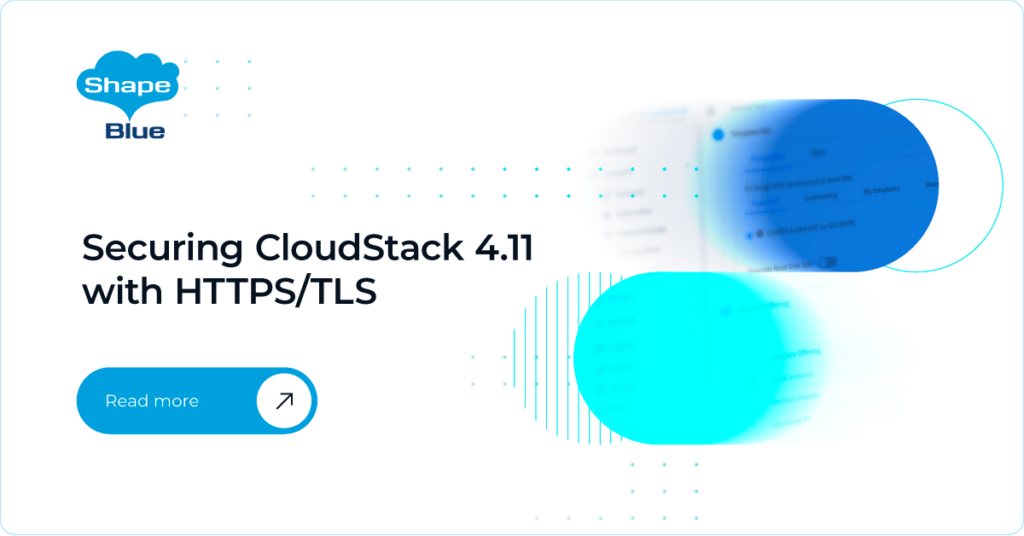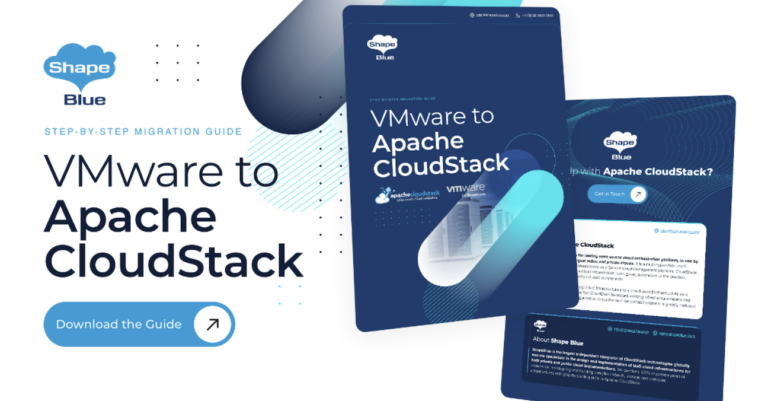Securing CloudStack 4.11 with HTTPS/TLS

Apache CloudStack is generally considered secure out of the box, however it does have the capability of protecting both system VM traffic as well as management traffic with TLS certificates. Prior to version 4.11 CloudStack used Tomcat as the web server and servlet container. With 4.11 this has been changed to embedded Jetty web server […]
Integration Testing within CloudStack – Marvin

Integration testing – What it is and why SDLC needs it. What is Integration testing? This is a type of testing where multiple components are combined and tested working together. There are different aspects of integration testing depending on the project and component scale, but usually it comes down to validating that different modules can […]
Working towards CloudStack zero downtime upgrades

As most people know, Apache CloudStack has gained a reputation as a solid, low maintenance dependable cloud orchestration platform. That’s why in last year’s Gartner Magic Quadrant so many leaders and challengers were organisations underpinning their services with Apache CloudStack. However, version upgrades – whilst being much simpler than many competing technologies – have always been […]
How to deploy templates without using secondary storage on KVM

Introduction ShapeBlue have been working on a new feature for Apache Cloudstack 4.11.1 that will allow users to bypass secondary storage with KVM. The feature introduces a new way to use templates and ISOs, allowing administrators to use them without being cached on secondary storage. Using this approach Cloudstack administrators will not have to worry […]
A Beginners Guide To CloudStack Networking

Many people find it challenging to get started with CloudStack’s networking. There are some basic concepts, which although not overly complicated, are not especially obvious either. This blog will try to explain these underlying concepts, in order to make getting started with CloudStack networking models much easier.
VPC to VPC VPN configuration in CloudStack

Introduction Configuring connectivity between CloudStack hosted VPCs can be done by either using private gateways – which has to be configured by CloudStack root administrators to use dedicated network segments – or by using VPC-to-VPC connections, which can be configured by the CloudStack end user without admin input. In this blog post we will cover how to […]
CloudStack upgrades – best practices

Introduction Upgrading CloudStack can sometimes be a little daunting – but as the 5P’s proverb goes – Proper Planning Prevents Poor Performance. With planning, testing and the right strategy upgrades will have a high chance of success and have minimal impact on your CloudStack end users. The CloudStack upgrade process is documented in the release notes for […]
Installing and Configuring an OCFS2 Clustered File System

Last year we had a project which required us to build out a KVM environment which used shared storage. Most often that would be NFS all the way and very occasionally Ceph. This time however the client already had a Fibre Channel over Ethernet (FCoE) SAN which had to be used, and the hosts were HP blades […]
Recovering From a vCenter Failure

While, in my opinion VMware’s vSphere is the best performing and most stable hypervisor available, vCenter obstinately remains a single point of failure when using vSphere and it’s no different when leveraging vCenter in a CloudStack environment. Therefore, very occasionally there is a requirement to rebuild a vCentre server which was previously running in your […]
Recovery of VMs to new CloudStack instance

We recently came across a very unusual issue where a client had a major security breach on their network. As well as lots of other damage their CloudStack infrastructure was maliciously damaged beyond recovery. Luckily the hackers hadn’t manage to damage the backend XenServer hypervisors so they were quite happily still running user VMs and Virtual Routers, […]



